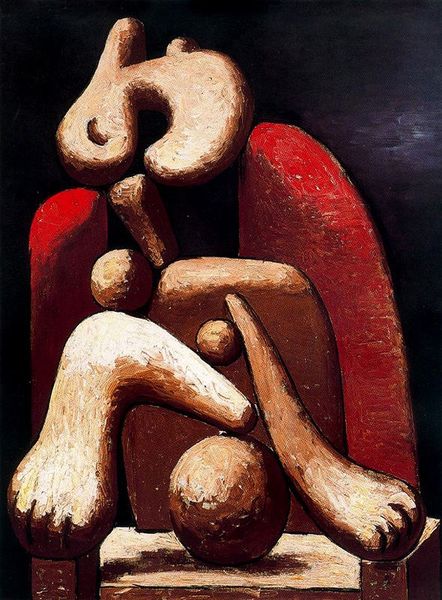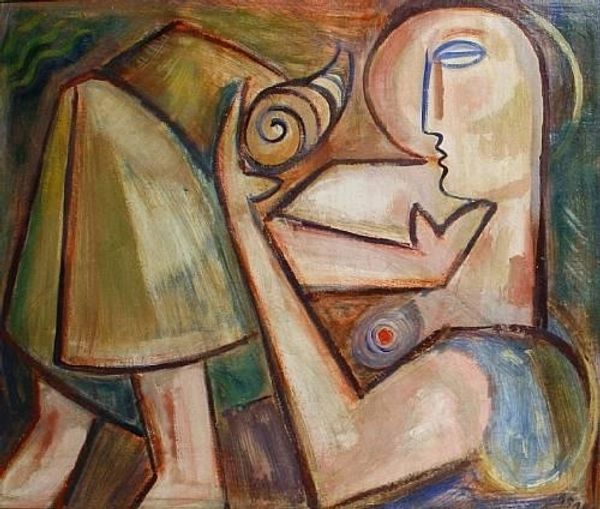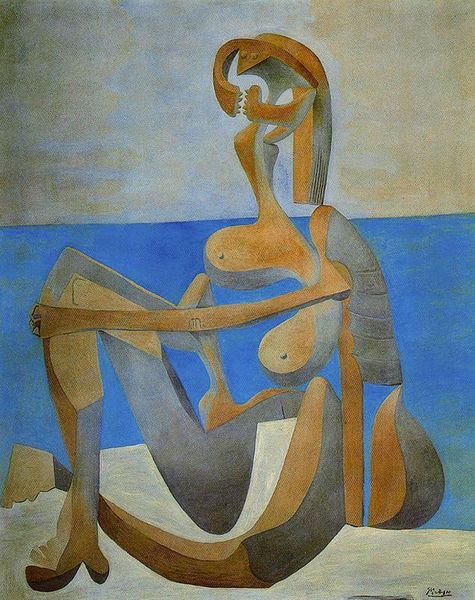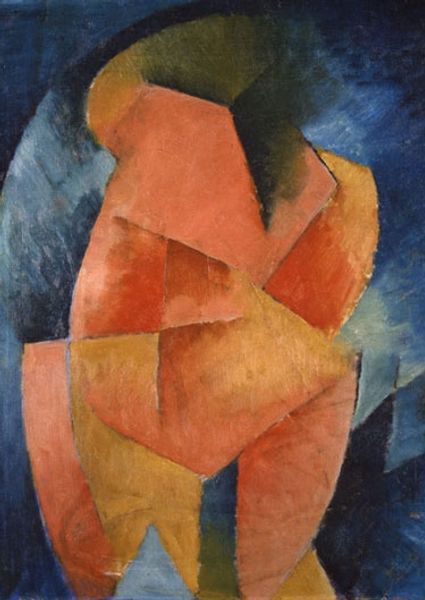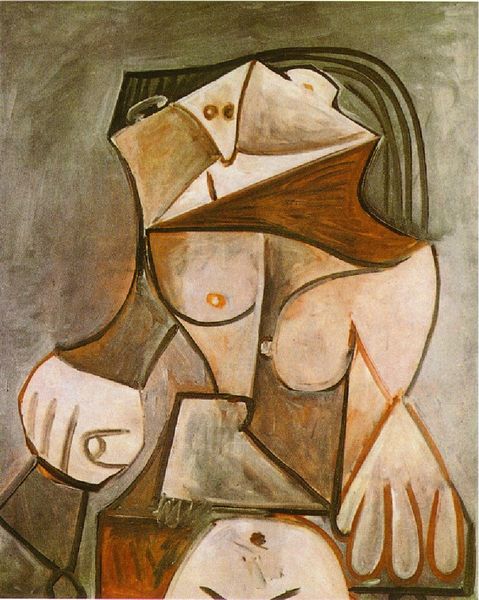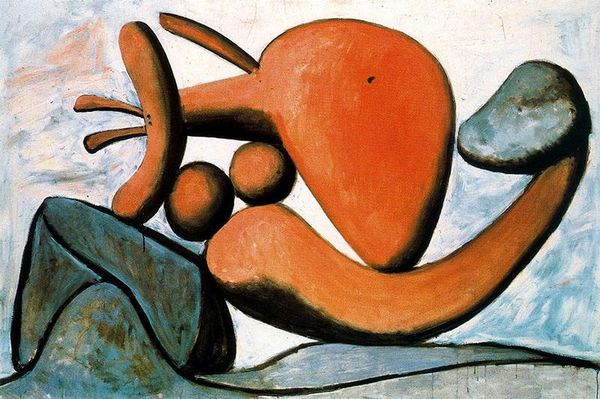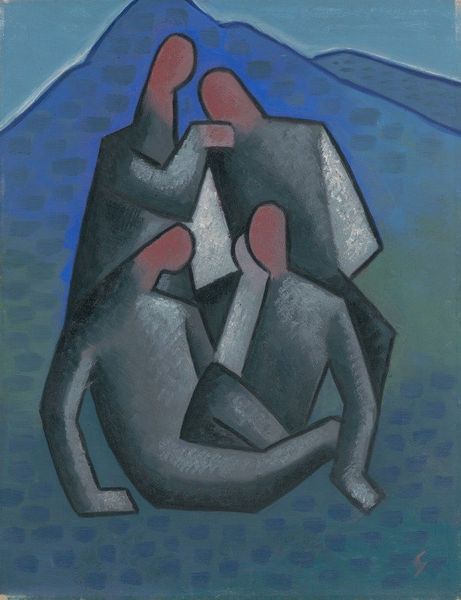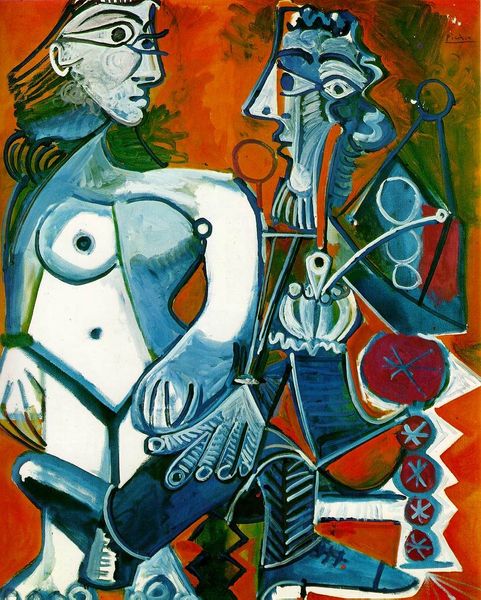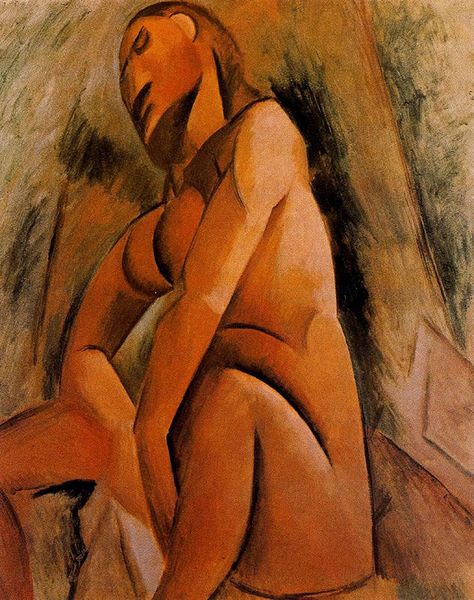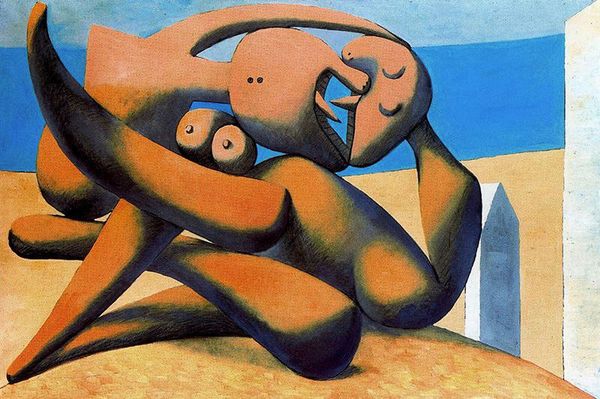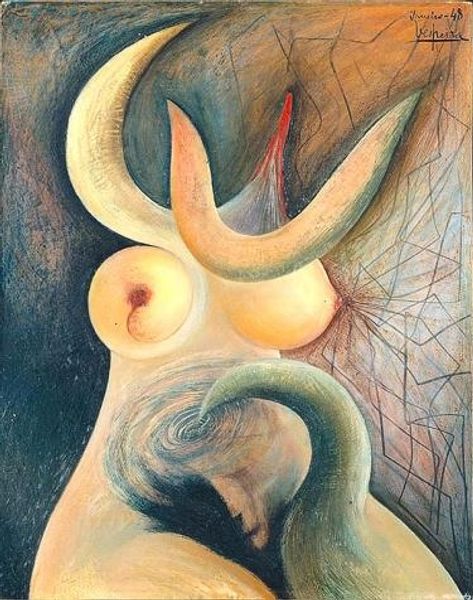
Copyright: Pablo Picasso,Fair Use
Editor: Here we have Pablo Picasso's "Great Bather Reading" from 1937, rendered in oil paint. The figure is so abstracted; it's almost sculptural, conveying a sense of introspective weight. How do you interpret this work, especially considering the socio-political context of 1937? Curator: In 1937, the world was teetering on the edge of war, and Picasso, like many artists, was deeply affected. Looking at "Great Bather Reading," I see a response to that anxiety, though a deeply internalized one. The distorted form, the oppressive colors; do you see how it diverges from the more celebratory depictions of women in earlier Cubism? Editor: I do. It’s a far cry from the bright colors and fragmented joy of his earlier works. This feels much heavier, almost mournful. Is this connected to the impending conflict? Curator: Precisely. Consider how museums and galleries, then and now, curate and display these works. What narrative is being presented? The "bather" archetype is turned on its head. Traditionally a symbol of leisure and beauty, she's now burdened, reading amidst an oppressive atmosphere. This distortion reflects a wider cultural anxiety of the pre-war era. It shows that even leisure is affected by the political environment. Editor: So the painting's meaning is constructed not just by Picasso's intent but also by its reception and the way it’s presented in the public sphere? Curator: Exactly! And it prompts us to ask: How has that meaning evolved over time? Has our understanding shifted with each subsequent crisis? How is Picasso being read today? Editor: That’s a really interesting perspective. It makes you consider the painting not as a fixed object but as part of an ongoing dialogue. I will be checking what has changed between exhibition halls! Curator: Indeed. Seeing it as an active participant in history truly enriches our understanding.
Comments
No comments
Be the first to comment and join the conversation on the ultimate creative platform.
